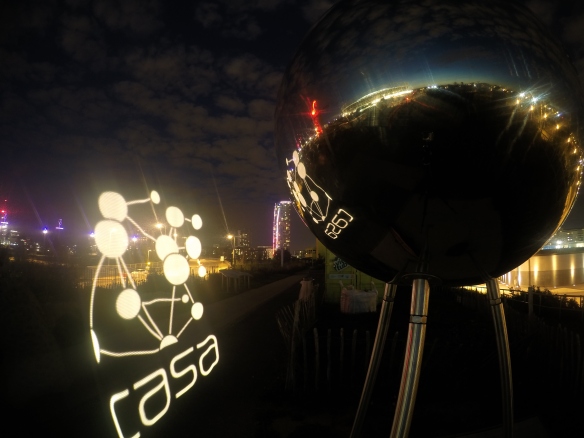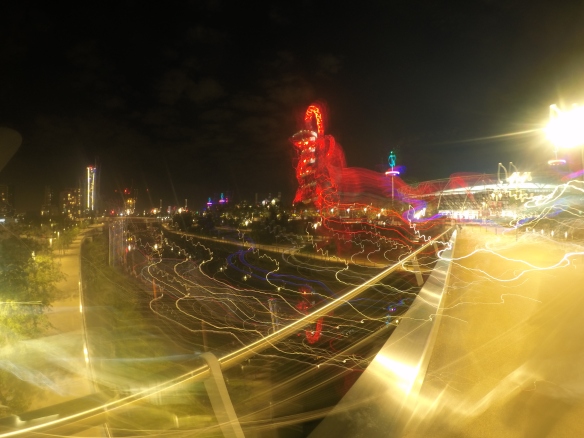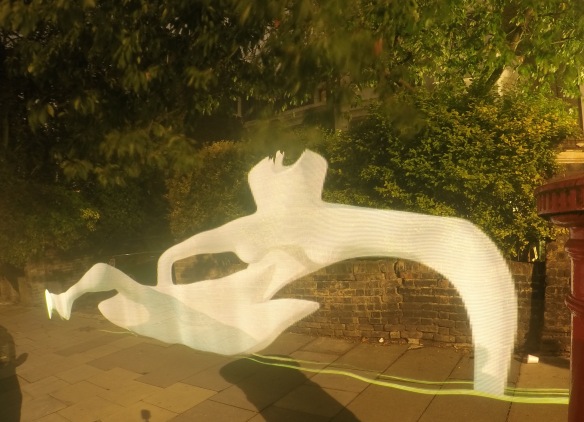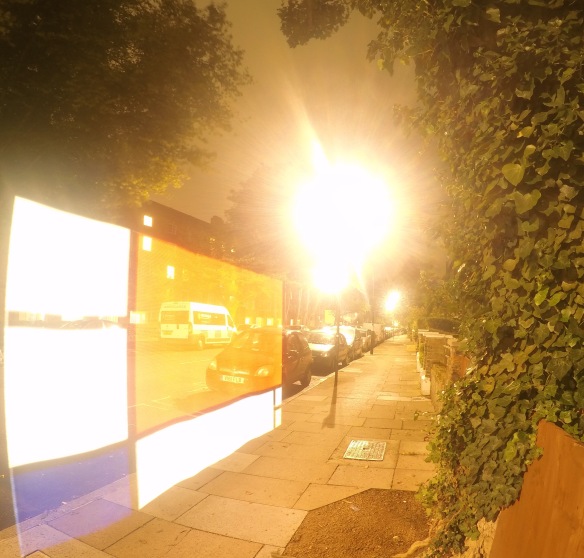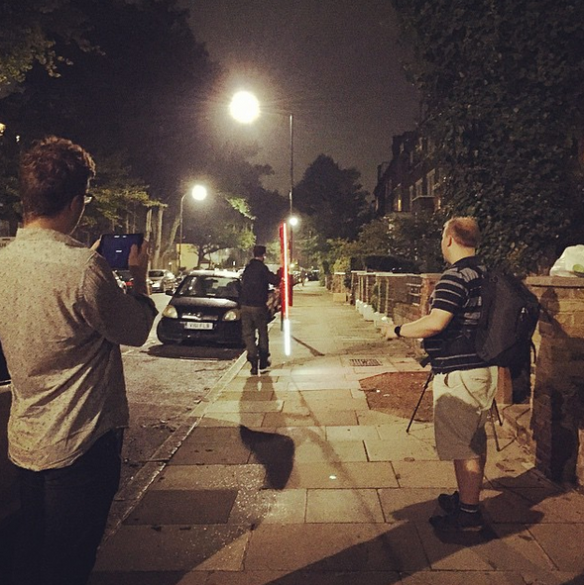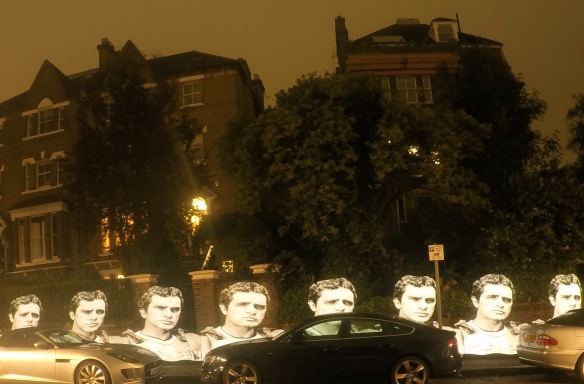Pixelsticking in Hampstead and the Olympic Park
The last weeks have seen me, Steve Gray, Carina Schneider and Bianca Winter at large in Crystal Palace, East London, and Camden, painting with light and creating “temporary graffiti” – or virtual installations, if you will.
The pixelstick is best thought of as a light painting wand. You may be familiar with traditional light painting – where we use long-exposure photography to pick out bright trails within the image:
(Normally, we hold the camera still and move the light sources, but here we did the opposite)
The Pixelstick works in a similar way, but rather than using a point to create a line, it uses a 1D line (of LEDs) to create a 2D image. It’s also clever enough to vary what those individual LEDs show, so if you walk along with it, it will draw a picture, row by row:
We began our pixelstick adventures late last month – thanks to the UCL Public Engagement Unit Pathways grants, we were able to buy one, and a GoPro for capturing the images – but July is not the best month to start nighttime photography. However, this summer Camden council celebrates their 50th Anniversary, so we though we would mark it by trying out the pixelstick at iconic blue plaque locations. We picked a cluster that included some visual artists – or there could be a bit of a danger that we’d just be painting lots of men with beards. First up, sculptor Henry Moore:
And next, artist Piet Mondrian:
We’d intended this to be a bit of a test run, but our activities got a lot of attention. Residents did come and talk to us about what we were up to, and one of the people living in Mondrian’s old house even helped us to make the image.
What’s better than Richard Burton? An army of Richard Burtons, of course:
From a technical perspective, I think this image provides a lot of ideas. You can see the light from the pixelstick shaded as it passes through a car window, and reflected on the surface of the car bonnets. It would be very easy to recreate the effect of a flat image perpendicular to the viewer in Photoshop (other software is available), so if we could do that, why would we mess around with a pixelstick? The pixelstick seems to shine* when we create images which reflect its embeddedness in 3D space – using oblique views, curving the image, having objects in front and behind – or showing lighting effects that are easy to produce in situ but hard in post – complex or curved reflections, tinted glass, and so on.
So these are our first few images – our next stop is the Olympic Park for some re-creation of past glories. If you’re interested in seeing some of these, why not visit our exhibits at Park Life**, part of the UCL Spark Festival on Sunday 30th or Monday 31st August?
*sorry
**not my title

